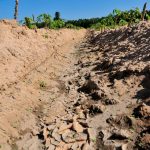SDG 4 Quality education
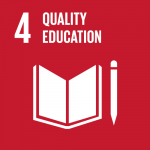
Sustainable Development Goal 4 – Ensure inclusive and equitable quality education and promote lifelong learning opportunities for all – focuses on education as a fundamental human right that is necessary for the achievement of all the SDGs.1 Education supports the achievement of gender equality by empowering women and is crucial to creating ...
Environmental and biodiversity protection

Cambodia is one of the most biodiverse countries in Southeast Asia. Biodiversity supports Cambodians ecologically, economically and culturally. It plays an important role in providing ecosystem services and economic development to achieve the Cambodian Millennium Development Goals including poverty reduction. ...
Coal
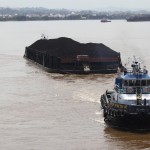
Although exploratory work has indicated the presence of modest coal resources in northern Cambodia, no commercial-scale mining has yet begun. The coal used in electricity generation and for other purposes is imported.A coal barge from Samarinda coal mine on the Mahakam river. Indonesia, Borneo. Photo ...
Water pollution

Young child drinks clean water in Cambodia. Photo by Cecilia Snyder, taken on 12 July 2003. Licensed under CC BY-NC-ND 2.0Water pollution can be defined in many different ways. Basically, it is the contamination of water when pollutants are discharged into water bodies without treatment ...
Oil refineries
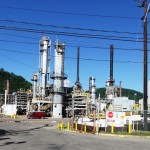
There is currently no oils refinery in Cambodia. Although a refinery has been planned, its construction has been delayed several times, reportedly over financing difficulties. ...
Bilateral development assistance
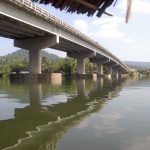
Phum Doung Bridge over the Tatai River. Photo by Robert Tyabji, taken on 9 December 2010. Licensed under CC BY-NC-ND 2.0Bilateral aid is assistance given by a government directly to the government of another country or to a local NGO. The Royal Government of Cambodia ...
Ground water
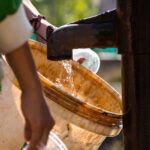
Cambodia relies heavily on its groundwater resources to overcome water shortages during the dry season. More than half of the population depends on it when enough surface water is not available. At a certain depth, the ground is saturated with water, and the upper surface ...
Anti-corruption
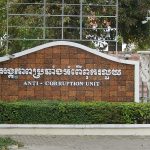
Anti-Corruption Unit, Phnom Penh, Cambodia. Photo by Michael Coghlan, taken on 9 January 2014. Licensed under CC BY-SA 2.0In the 2016 Corruption Perceptions Index published by Transparency International, released in January 2017, Cambodia ranked 156th out of 176 countries.203 Cambodia has the lowest score of all ...
Non-renewable energy production
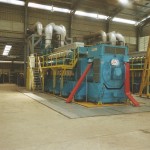
Non-renewable energy sources are chiefly fossil fuels such as coal, diesel, oil and gas. They provide most of Cambodia’s locally-produced electrical supply – in 2011 diesel and heavy fuel oil generators provided 89% of local electricity generation. ...
Mining
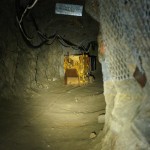
The mining sector in Cambodia is mostly undeveloped, and active mining enterprises are typically small-scale quarries producing materials for construction, such as laterite, marble, granite, limestone, gravel and sand. There is no industrial-scale extraction of minerals, although many exploration licenses have been granted to ...
Urban administration and development
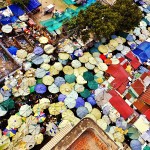
Bird eye view of a local market in Phnom Penh. Photo by Roberto Trombetta, taken on 8 May 2015. Photo licensed under Creative Commons Attribution-NonCommercial 2.0 GenericThe development and administration of Cambodia’s urban areas has struggled to keep pace with urban population growth. For example, ...
Hydropower dams
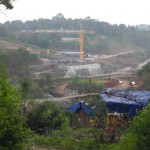
In 2003, a national sector review for hydropower was prepared by the Ministry for Industry, Mines and Energy (now Ministry of Mines and Energy) and the Cambodian National Mekong Committee (CNMC). This report identified 60 possible sites for hydropower development in Cambodia and estimated the ...
Social land concessions
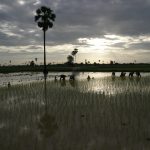
Social land concessions (SLCs) are intended to provide to the landless or land-poor land on which to establish residences and/or generate income through agriculture. The Cambodian Government that more than 30,000 households have received land as social land concessions. Despite its pro-poor intention, the SLC ...
International relations

Cambodia has strong diplomatic links with many countries. Its warmest relationship with a superpower is with the People's Republic of China. The most important economic ties are with China, the United States of America, Thailand and Vietnam. Cambodia is a member of the UN, ASEAN, ...
Primary and secondary education
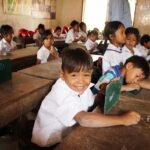
Article 68 of Cambodia’s Constitution states that the Government shall provide free primary and secondary education for all citizens and each individual shall pursue basic education for at least 9 years. Education is a fundamental engine of social and economic development for a country, especially ...
Social development
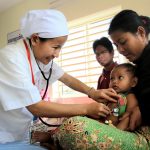
A trained medical staff listens to the heartbeat of an infant at 16 Makara hospital in Preah Vihear, Cambodia. Photo by The World Bank, taken on 30 January 2013. Licensed under CC BY-NC-ND 2.0.Social development addresses profound social problems,358 especially poverty, unemployment and social exclusion, ...
Solid waste
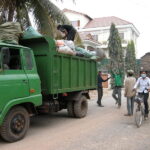
Trash collection in Siem Reap province, Cambodia. Photo taken by David Villa, taken on 12 January 2008. Licensed under CC BY 4.0 DEED.Solid waste is defined as “used things, materials, or products that remain or are generated from human daily activities and livelihood and do ...
Science and technology
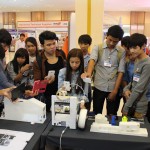
Students gathering around 3D printed models at a construction expo in Phnom Penh. Photo by ARC Hub PNH, taken in December 2014. Used with permission from ARC Hub PNH.Cambodia has achieved considerable economic and social progress in the last few decades, but the country does ...
Adaptation
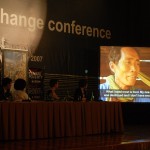
UN’s Bali Climate Change Conference. Photo by Oxfam International, taken on 4 December 2007. Licensed under CC BY-NC-ND 2.0Climate change is a continuing problem. In Southeast Asia, Cambodia is one of the countries that is most affected and underprepared. As it is a developing country, ...


